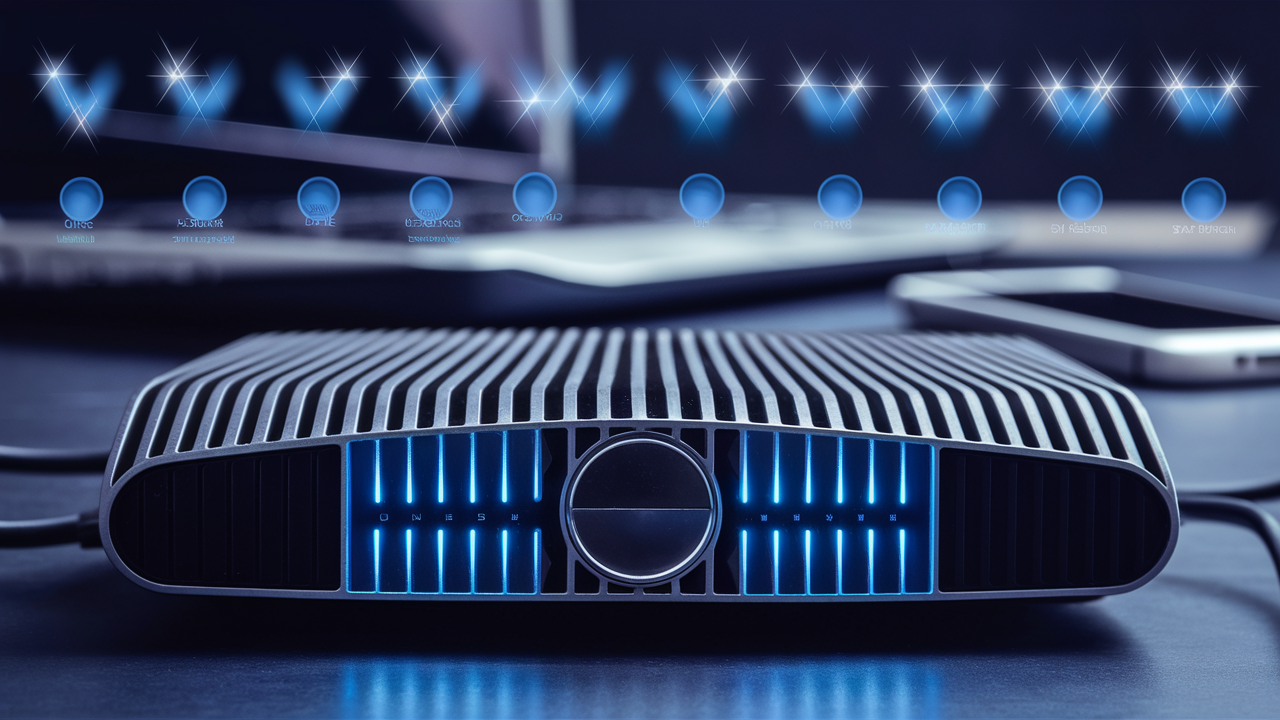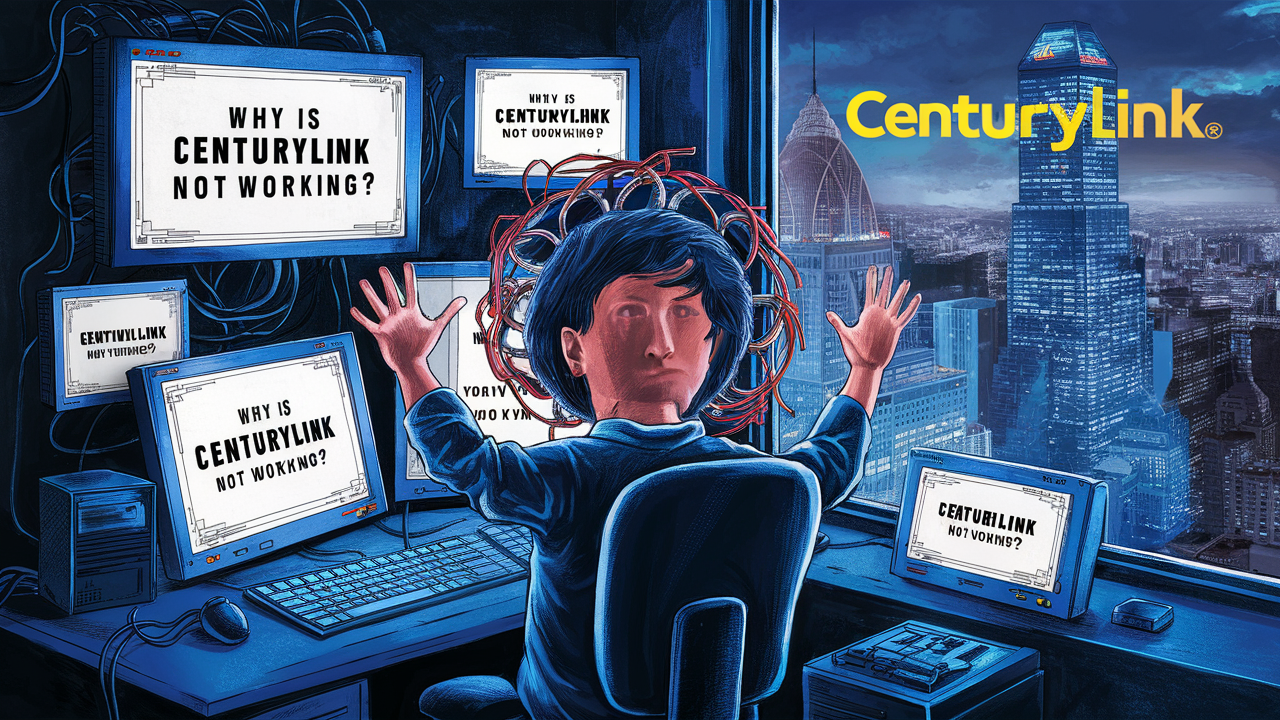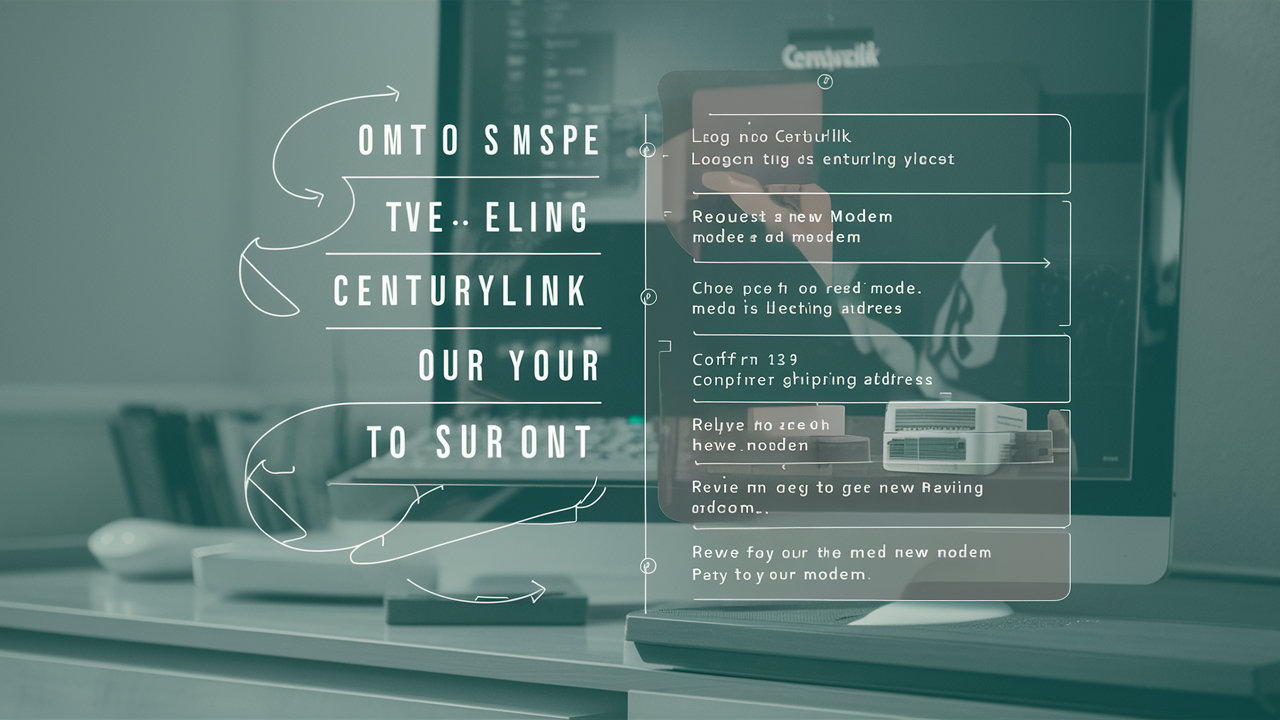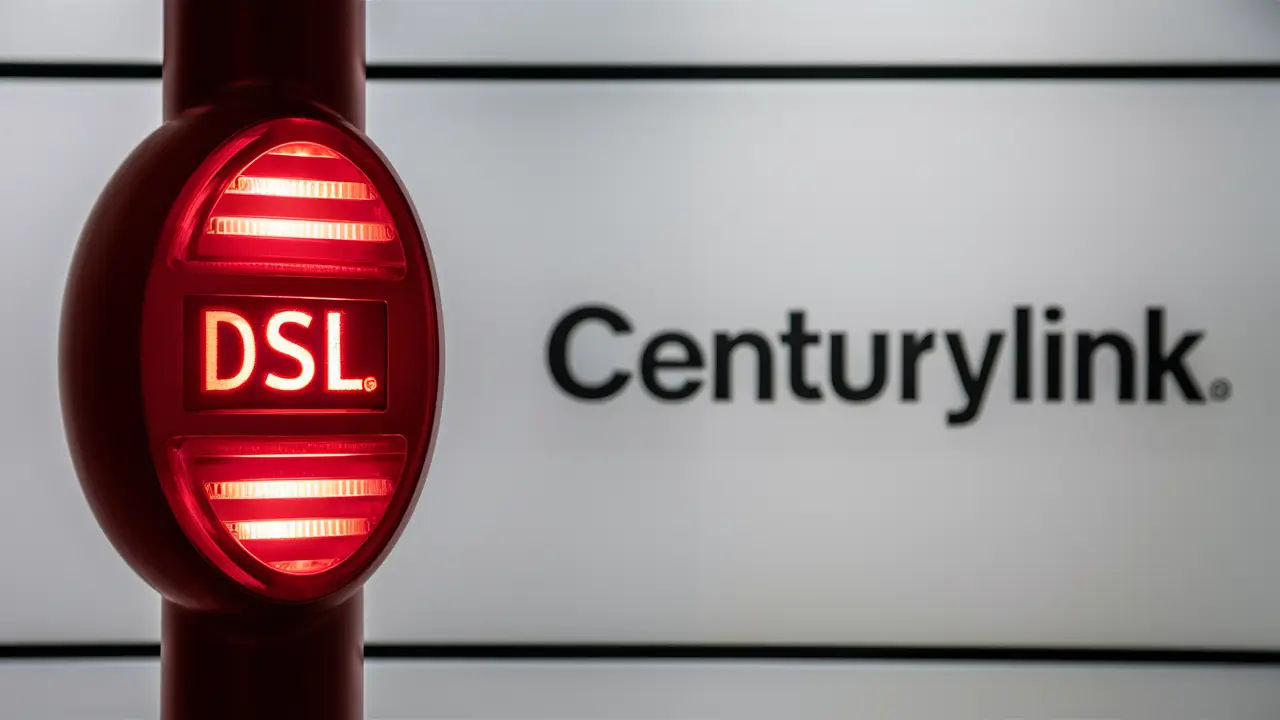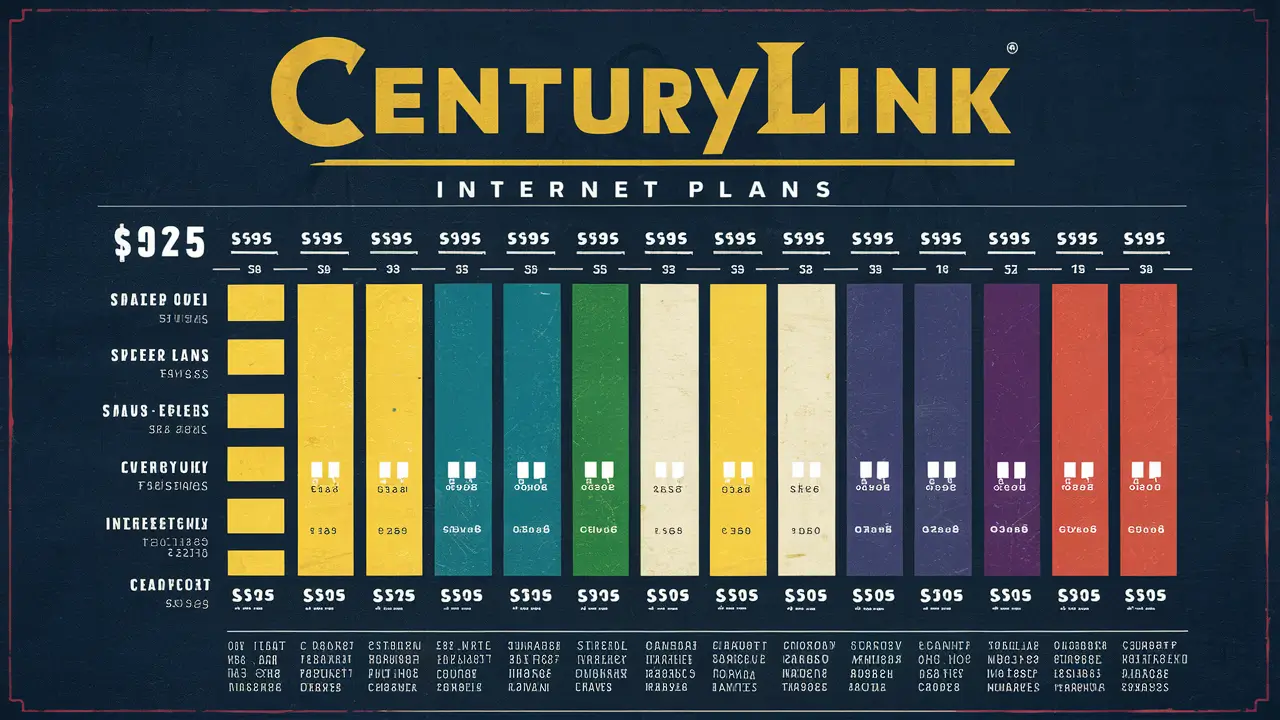Is Quantum Fiber CenturyLink?
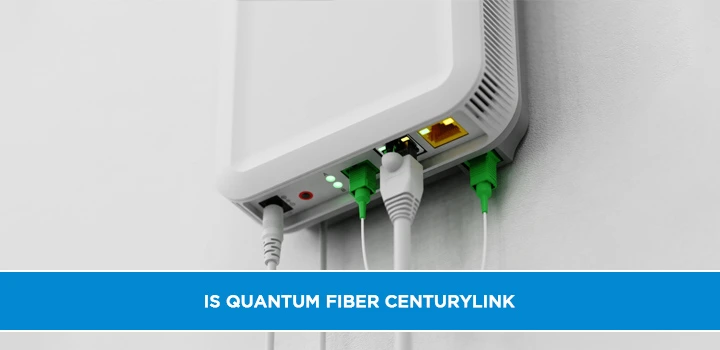
Quantum Fiber is not simply a rebranding of CenturyLink; it represents a significant evolution. While Quantum Fiber is operated by Lumen Technologies, the parent company of CenturyLink, it signifies a distinct, next-generation fiber optic network focused on superior speeds and customer experience, separate from the legacy infrastructure and service models of traditional CenturyLink offerings.
Quantum Fiber vs. CenturyLink: Understanding the Nuance
The question "Is Quantum Fiber CenturyLink?" is a common one, and the answer, while seemingly simple, carries significant implications for consumers seeking high-speed internet. To put it plainly: Quantum Fiber is not CenturyLink, but it is operated by the same parent company, Lumen Technologies. This distinction is crucial. Think of it like a car manufacturer releasing a new luxury brand; it shares the same corporate ownership but offers a distinctly different product, experience, and target market. Quantum Fiber represents Lumen's strategic investment in a next-generation, all-fiber network designed to deliver unparalleled internet speeds and a modern customer experience, often distinct from the services traditionally offered under the CenturyLink brand, which may still utilize older copper infrastructure in many areas. As of 2025, this strategic differentiation is more pronounced than ever, with Quantum Fiber actively expanding its footprint and focusing on areas where the demand for cutting-edge connectivity is highest.
CenturyLink, now operating primarily as Lumen Technologies for its enterprise and wholesale divisions, has a long history in the telecommunications industry. For decades, it provided essential internet and phone services, often relying on a hybrid network infrastructure that included copper telephone lines. While upgrades have been made over the years, the inherent limitations of copper technology mean that it often cannot match the sheer speed and reliability of pure fiber optics. Quantum Fiber, on the other hand, was conceived from the ground up as an all-fiber network. This means that the fiber optic cables run directly to the customer's premises, enabling significantly faster download and upload speeds, lower latency, and greater bandwidth capacity. This fundamental difference in infrastructure is the core reason why Quantum Fiber is positioned as a distinct offering, aiming to capture the market segment that prioritizes premium, future-proof internet connectivity. The ongoing expansion and marketing of Quantum Fiber in 2025 underscore Lumen's commitment to this advanced technology, setting it apart from the more established, and sometimes legacy-bound, CenturyLink services.
The Evolution of Internet Service: From Copper to Fiber
Understanding the difference between Quantum Fiber and CenturyLink necessitates a brief look at the evolution of internet service delivery. For many years, the backbone of residential and business internet was the traditional copper telephone network. Technologies like DSL (Digital Subscriber Line) leveraged these existing copper wires to transmit data. While revolutionary in its time, DSL technology has inherent limitations. The further a customer is from the central office or a local node, the weaker the signal becomes, leading to slower speeds and less reliable connections. Furthermore, copper is susceptible to electromagnetic interference, which can further degrade performance. As the demand for data-intensive applications like high-definition video streaming, online gaming, and cloud computing surged, the limitations of copper became increasingly apparent. This created a market need for a superior technology.
Enter fiber optics. Fiber optic cables transmit data using light pulses through thin strands of glass or plastic. This technology offers several key advantages over copper:
Speed and Bandwidth
Fiber optic cables can carry significantly more data over longer distances with minimal signal loss. This translates directly into much higher download and upload speeds, often reaching gigabit speeds (1,000 Mbps) and beyond. In 2025, gigabit speeds are becoming the new standard for many consumers, and multi-gigabit options are increasingly available, something that is difficult, if not impossible, to achieve reliably with DSL over copper.
Reliability and Stability
Fiber is immune to electromagnetic interference, meaning it's not affected by weather, power lines, or other electrical devices. This results in a more stable and consistent connection, with fewer dropped connections and less fluctuation in speed.
Lower Latency
Latency, the time it takes for data to travel from source to destination and back, is crucial for real-time applications like online gaming, video conferencing, and remote work. Fiber optic networks inherently have lower latency compared to copper networks, providing a more responsive internet experience.
The transition from copper to fiber is a global trend, driven by the ever-increasing demand for bandwidth and the desire for a more robust and future-proof internet infrastructure. Quantum Fiber is Lumen Technologies' direct response to this trend, focusing exclusively on building and deploying this advanced fiber optic technology.
Quantum Fiber: A New Era of Connectivity in 2025
In 2025, Quantum Fiber stands as Lumen Technologies' flagship offering for residential and small business customers seeking the pinnacle of internet performance. It's not merely an upgrade; it's a complete reimagining of the internet service experience, built on a foundation of 100% fiber optic infrastructure. This means that from the central office all the way to your home or business, data travels via light, ensuring the fastest, most reliable, and most consistent connection possible. The core promise of Quantum Fiber revolves around delivering symmetrical gigabit speeds (1 Gbps download and 1 Gbps upload) as a standard offering in many of its service areas, with multi-gigabit options (2 Gbps, 5 Gbps, and even 8 Gbps) becoming increasingly prevalent. This symmetrical nature is a game-changer for activities that require robust upload speeds, such as uploading large files, high-quality video conferencing, live streaming, and running cloud-based applications.
Beyond raw speed, Quantum Fiber emphasizes a streamlined and modern customer experience. This includes:
- Transparent Pricing: Quantum Fiber aims to eliminate the frustrating practice of hidden fees and surprise price hikes. Plans are often advertised with the all-in cost, including equipment and taxes, providing a clear understanding of monthly expenses.
- Next-Gen Equipment: Customers typically receive state-of-the-art Wi-Fi 6 routers designed to handle the high speeds and multiple connected devices common in modern households. This ensures that the full potential of the fiber connection is realized throughout the home.
- Simplified Installation: The installation process is designed to be efficient and hassle-free, with professional technicians ensuring a clean and timely setup.
- Enhanced Support: Quantum Fiber prioritizes customer support, offering accessible and knowledgeable assistance to resolve any issues promptly.
The expansion of Quantum Fiber in 2025 is strategically focused on areas with high population density and a demonstrated demand for advanced connectivity solutions. This includes major metropolitan areas and rapidly growing suburban communities. Lumen Technologies is actively investing billions of dollars to build out this pure fiber network, recognizing that future growth and market leadership depend on providing the most advanced internet infrastructure available. This aggressive build-out strategy positions Quantum Fiber as a direct competitor to other major fiber providers and a significant upgrade over legacy cable and DSL services.
CenturyLink's Legacy and Current Offerings
CenturyLink, as a brand, continues to exist, primarily serving customers who may not yet have access to Quantum Fiber's pure fiber network or who prefer to stick with established services. For these customers, CenturyLink typically offers internet plans based on DSL technology, utilizing the existing copper telephone infrastructure. Speeds can vary significantly depending on location and proximity to network facilities, often ranging from basic speeds suitable for email and web browsing to more robust plans that can handle some streaming and light online activity. However, these speeds are generally considerably lower than what Quantum Fiber provides, and they are often asymmetrical (meaning download speeds are much faster than upload speeds).
In many areas, CenturyLink may also offer bundled services, including home phone and television packages, which can be appealing to customers who prefer a single provider for multiple utilities. However, it's important for consumers to understand the underlying technology. When considering CenturyLink internet in 2025, potential customers should carefully check the advertised speeds and confirm the type of technology being deployed in their specific area. In regions where Quantum Fiber is available, the contrast in performance and capabilities between the two offerings is stark. CenturyLink's role is evolving; while it remains a vital provider for many, especially in rural or underserved areas where fiber deployment is more challenging, it represents the company's legacy infrastructure. Lumen Technologies' strategic focus for high-performance, next-generation internet is clearly channeled through the Quantum Fiber brand.
The distinction is important for consumer choice. If you are looking for the absolute best in speed, reliability, and future-proofing, Quantum Fiber is the intended solution. If your needs are more basic, or if Quantum Fiber is not yet available in your area, CenturyLink may still be a viable option, but with the understanding of its technological limitations compared to pure fiber. The company's dual-brand strategy allows it to serve a wider range of customers while simultaneously investing in and promoting its most advanced technology.
Key Differentiators: Quantum Fiber vs. Traditional CenturyLink
The most significant divergence between Quantum Fiber and traditional CenturyLink offerings lies in the underlying technology and the resulting performance. As of 2025, this distinction is clearer than ever, driven by Lumen's strategic investment in its fiber infrastructure.
| Feature | Quantum Fiber | Traditional CenturyLink (DSL) |
|---|---|---|
| Primary Technology | 100% Fiber Optic Network (FTTH - Fiber to the Home) | Digital Subscriber Line (DSL) over Copper Telephone Lines |
| Speeds (Typical) | Symmetrical Gigabit (1 Gbps up/1 Gbps down) standard; Multi-Gigabit options (2-8 Gbps) available. | Asymmetrical speeds, ranging from 10 Mbps to 100 Mbps download, with significantly lower upload speeds (e.g., 1-10 Mbps). |
| Reliability | Extremely high; immune to electromagnetic interference and weather. Consistent performance. | Variable; susceptible to distance from exchange, interference, and line quality. Performance can fluctuate. |
| Latency | Very Low; ideal for gaming, video conferencing, and real-time applications. | Higher; can impact real-time performance. |
| Bandwidth Capacity | Virtually unlimited; future-proof for increasing data demands. | Limited; struggles with multiple high-bandwidth activities simultaneously. |
| Customer Experience Focus | Modern, transparent pricing, next-gen equipment, streamlined setup. | Traditional service model, may involve bundled packages, variable pricing structures. |
| Target Market | Tech-savvy users, gamers, remote workers, households with many connected devices, those seeking premium performance. | Basic internet users, budget-conscious consumers, areas where fiber is not yet available. |
This table highlights the fundamental differences. Quantum Fiber represents the cutting edge, while CenturyLink (DSL) represents the established, legacy infrastructure. The choice between them hinges on individual needs, budget, and crucially, availability in your specific location.
The Technology Behind Quantum Fiber
Quantum Fiber's performance is rooted in its commitment to a pure fiber optic network, often referred to as Fiber to the Home (FTTH) or Fiber to the Premises (FTTP). This means that the physical infrastructure delivering internet service consists entirely of fiber optic cables, from Lumen's central offices or points of presence all the way to the customer's doorstep. Unlike hybrid fiber-coaxial (HFC) networks used by cable companies, which use fiber for the main lines and coaxial cable for the final connection to the home, or DSL, which uses copper phone lines, Quantum Fiber utilizes fiber for the entire path. This eliminates the bottlenecks and limitations associated with older technologies.
The core component is the fiber optic cable itself, which is made of incredibly thin strands of glass or plastic. Data is transmitted through these strands as pulses of light. The advantages of using light signals are manifold:
- Immunity to Interference: Light signals are not affected by electromagnetic interference (EMI) or radio frequency interference (RFI), which plague copper-based networks. This ensures a cleaner signal and more consistent speeds, regardless of nearby electrical devices or weather conditions.
- Low Signal Degradation: Light signals can travel for many miles through fiber optic cables with minimal loss of strength or quality. This allows providers to deliver high-speed internet over greater distances without the need for frequent signal boosters, which can introduce noise.
- High Bandwidth Capacity: The bandwidth of fiber optic cable is theoretically immense. This means it can carry vast amounts of data simultaneously, enabling the gigabit and multi-gigabit speeds that Quantum Fiber offers. As technology advances, the capacity of fiber can be further increased without needing to replace the physical cables.
- Symmetrical Speeds: Because the light transmission is highly efficient in both directions, fiber optic networks can easily support symmetrical upload and download speeds. This is crucial for modern internet usage, where uploading content, participating in video calls, and cloud backups are as important as downloading.
Quantum Fiber also leverages advanced networking equipment, including high-performance routers and switches, to manage and deliver these speeds efficiently. Customers are typically provided with modern Wi-Fi 6 (802.11ax) compatible routers, which are designed to maximize the performance of gigabit-plus internet connections and support a large number of simultaneously connected devices. Wi-Fi 6 offers improved efficiency, speed, and capacity compared to older Wi-Fi standards, ensuring that the wireless experience within the home matches the wired speed delivered by the fiber connection. In 2025, the integration of these advanced technologies makes Quantum Fiber a truly next-generation internet service.
Navigating Your Internet Options: A Practical Guide
Choosing the right internet service provider and plan can be a complex decision, especially with brands like Quantum Fiber and CenturyLink operating under the same parent company. Here’s a practical guide to help you navigate your options in 2025:
1. Assess Your Needs
Before you even look at providers, understand what you need from your internet connection. Consider:
- Number of Users and Devices: How many people live in your household, and how many devices (smartphones, laptops, tablets, smart TVs, gaming consoles, smart home devices) will be connected simultaneously? More devices and users generally require higher speeds and bandwidth.
- Primary Activities: What do you primarily use the internet for? Basic web browsing and email require less speed than streaming 4K video, online gaming, video conferencing for work, or uploading large files.
- Speed Requirements: For basic use, 50-100 Mbps might suffice. For streaming and moderate use, 200-500 Mbps is often recommended. For heavy users, gamers, and those working from home with demanding applications, gigabit speeds or higher are ideal.
- Upload vs. Download Needs: Most plans offer much faster download than upload speeds. If you frequently upload large files, stream live, or do a lot of video conferencing, symmetrical speeds (like those offered by Quantum Fiber) are a significant advantage.
2. Check Availability in Your Area
This is the most critical step. Visit the websites of Quantum Fiber and CenturyLink and enter your address to see what services are actually offered at your location. Quantum Fiber is actively expanding, but its availability is currently limited compared to CenturyLink's legacy network. You may find that only DSL is available from CenturyLink, or you might be fortunate enough to have access to Quantum Fiber's superior service.
3. Compare Plans and Pricing
Once you know what's available, compare the specific plans:
- Advertised Speeds: Look at both download and upload speeds. Understand if they are "up to" speeds, which can fluctuate.
- Monthly Cost: Check for introductory offers versus standard pricing after a promotional period. Be wary of plans that significantly increase in price after a year or two.
- Fees: Inquire about installation fees, equipment rental fees (modem/router), activation fees, and any other hidden charges. Quantum Fiber often emphasizes transparent, all-inclusive pricing.
- Contract Length: Are you required to sign a long-term contract? Month-to-month plans offer more flexibility.
- Data Caps: While less common with fiber, ensure there are no data caps that could limit your usage.
4. Read Reviews and Seek Recommendations
Look for independent reviews from customers in your area regarding both Quantum Fiber and CenturyLink. Pay attention to comments about installation quality, customer service responsiveness, and actual performance versus advertised speeds.
5. Consider Bundles Carefully
CenturyLink may offer bundles with phone or TV. While convenient, always calculate if the bundled price is truly a better deal than purchasing services separately from different providers. Often, the standalone internet service is the primary focus for Quantum Fiber.
By following these steps, you can make an informed decision that best suits your connectivity needs and budget in 2025. The key takeaway remains: if Quantum Fiber is available and within your budget, it represents a significant technological leap over traditional CenturyLink DSL offerings.
Future Outlook for Fiber Internet in 2025 and Beyond
The landscape of internet connectivity is rapidly evolving, and fiber optic technology is at the forefront of this revolution. In 2025, the demand for higher speeds, lower latency, and greater reliability continues to surge, fueled by advancements in technology and changing consumer habits. Quantum Fiber, with its commitment to 100% fiber infrastructure, is strategically positioned to capitalize on these trends. Lumen Technologies' substantial investments in expanding its Quantum Fiber footprint signal a clear belief in the future dominance of fiber optics.
Several key factors are driving the growth and importance of fiber internet:
- The Internet of Things (IoT): As more devices become connected – from smart home appliances and wearables to industrial sensors and autonomous vehicles – the network needs to handle a massive increase in data traffic and device communication. Fiber provides the necessary capacity and low latency.
- Remote Work and Education: The shift towards hybrid and remote work models, accelerated in recent years, requires robust and stable internet connections for seamless video conferencing, cloud access, and collaboration. Fiber is ideal for these demands.
- Immersive Technologies: The development and adoption of virtual reality (VR), augmented reality (AR), and the metaverse will necessitate extremely high bandwidth and ultra-low latency connections, capabilities that only fiber can reliably deliver.
- 5G and Beyond: While 5G cellular technology offers impressive wireless speeds, its full potential relies heavily on a robust fiber optic backhaul network to connect cell towers to the core network. Fiber is the indispensable foundation for next-generation wireless.
- Edge Computing: Processing data closer to the source (edge computing) requires fast and reliable connections between devices and edge servers. Fiber networks are crucial for enabling this distributed computing paradigm.
As a result, the trend towards fiber deployment is expected to accelerate. Providers like Lumen Technologies, through Quantum Fiber, are not just meeting current demand but are actively building infrastructure designed for the internet needs of the next decade and beyond. While legacy technologies like DSL and cable will continue to serve some markets for a time, the long-term future of high-performance internet is undeniably fiber. This means that consumers who can access Quantum Fiber are investing in a service that is not only superior today but will remain relevant and powerful for years to come, adapting to the ever-increasing appetite for data and connectivity.
Conclusion
In summary, the question "Is Quantum Fiber CenturyLink?" is best answered by understanding the strategic evolution within Lumen Technologies. Quantum Fiber is not a direct rebranding of CenturyLink; rather, it represents a distinct, next-generation internet service built exclusively on a pure fiber optic network. While both brands fall under the umbrella of Lumen Technologies, Quantum Fiber is Lumen's dedicated initiative to deliver cutting-edge, high-speed, and reliable internet connectivity, fundamentally different from the legacy DSL services often associated with the CenturyLink name. As of 2025, this distinction is critical for consumers seeking the best possible internet experience.
The core advantage of Quantum Fiber lies in its 100% Fiber to the Home (FTTH) infrastructure. This technology enables symmetrical gigabit speeds and even multi-gigabit options, offering unparalleled performance for everything from high-definition streaming and online gaming to demanding remote work applications and the burgeoning metaverse. Unlike traditional CenturyLink DSL, which relies on older copper telephone lines and suffers from limitations in speed, reliability, and latency, Quantum Fiber provides a stable, future-proof connection immune to electromagnetic interference and distance degradation. Furthermore, Quantum Fiber emphasizes a modern customer experience with transparent pricing and advanced equipment.
For consumers in 2025, the primary action is to check availability at their specific address. If Quantum Fiber is an option, it is unequivocally the superior choice for those prioritizing speed, performance, and reliability. It signifies Lumen's commitment to the future of connectivity, aligning with global trends towards increased data consumption, the Internet of Things, and immersive digital experiences. While CenturyLink continues to serve its existing customer base, particularly in areas where fiber deployment is not yet feasible, Quantum Fiber is positioned as the premium, high-performance offering. Making an informed choice requires assessing your individual needs, understanding the technology, and verifying service availability, but the message is clear: Quantum Fiber is Lumen's vision for the future of residential and small business internet.

